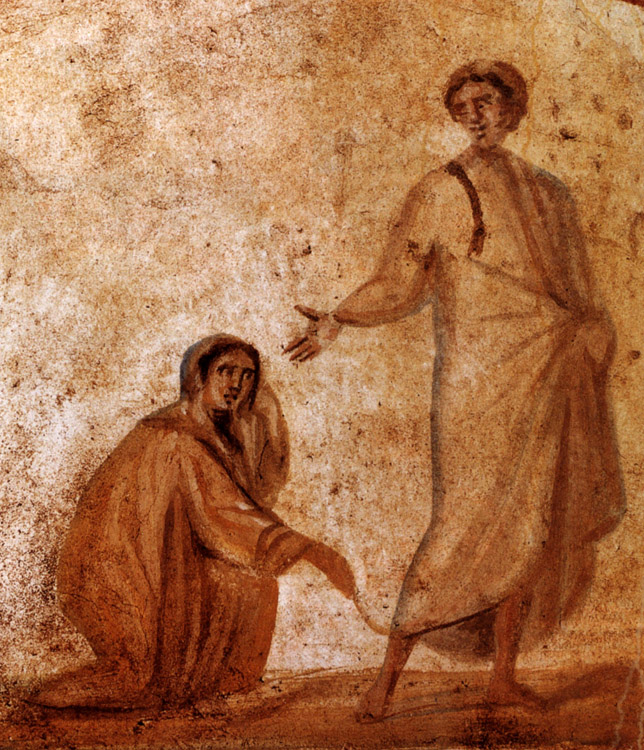
The Woman with the Flow of Blood
4th century
Wall painting
Catacombs of Marcellinus and Peter, Rome
As in the three gospel accounts, the woman touches the hem of Jesus' cloak, hoping to be cured of a chronic hemorrhage. He turns and gestures to her, a reference to his words, "Be of good heart, daughter, thy faith hath made thee whole" (Matthew 9:22, c.f. Mark 5:25-34 and Luke 8:43-48).
Actually, the gospel accounts are far more detailed than this image. The woman has had to push her way through a crowd that is following Jesus as he makes his way to the home of an official whose daughter is dying. After she touches the hem Jesus asks who touched him, and his disciples protest that the crowd is too dense for any one person to be so singled out. Only then does he turn and speak to the woman. The suppression of these details is typical of 4th-century images of this episode. The sarcophagi reliefs of the time also picture just these two figures and sometimes a single disciple.
In the Greek original that would have been the artist's likely source, the garment the woman touched was a "himation." The himation is similar to the Roman toga, which is what we see here and in most of the sarcophagus images. The stripes on his tunic signify high status. As usual in this century, he is pictured as a beardless young man.
In Mark and Luke, the woman falls down before Jesus; in the 4th-century images she kneels.
Read more about the iconography of this episode through the years.
Source: this page at Wikimedia Commons..